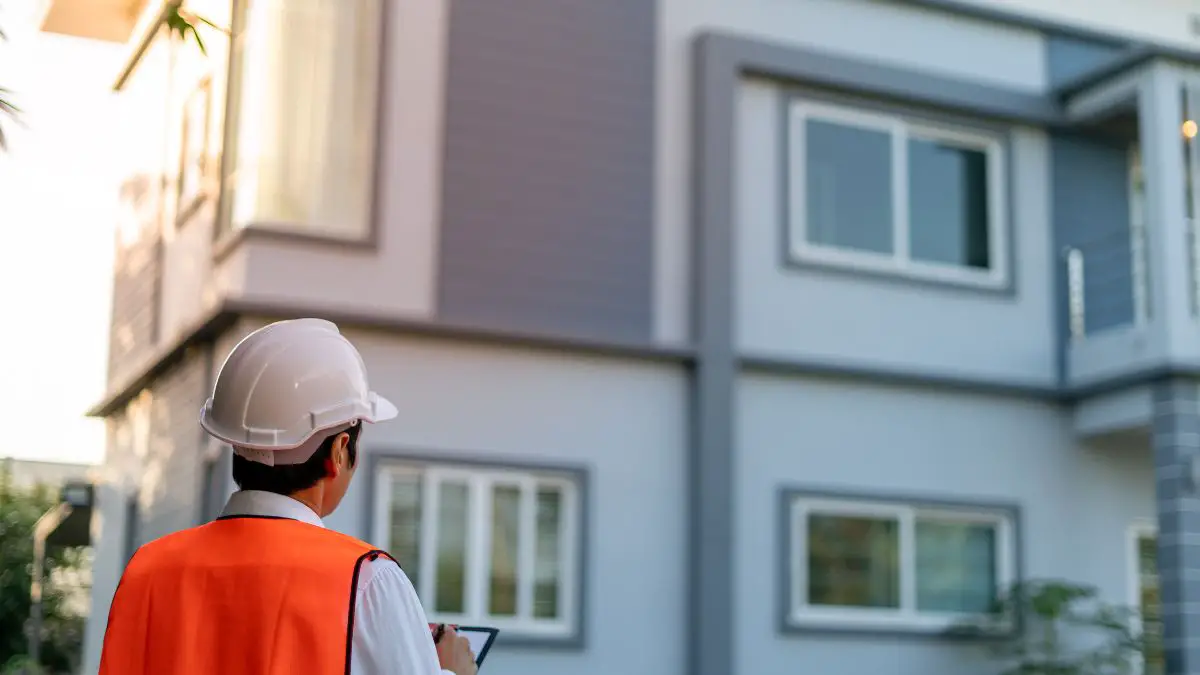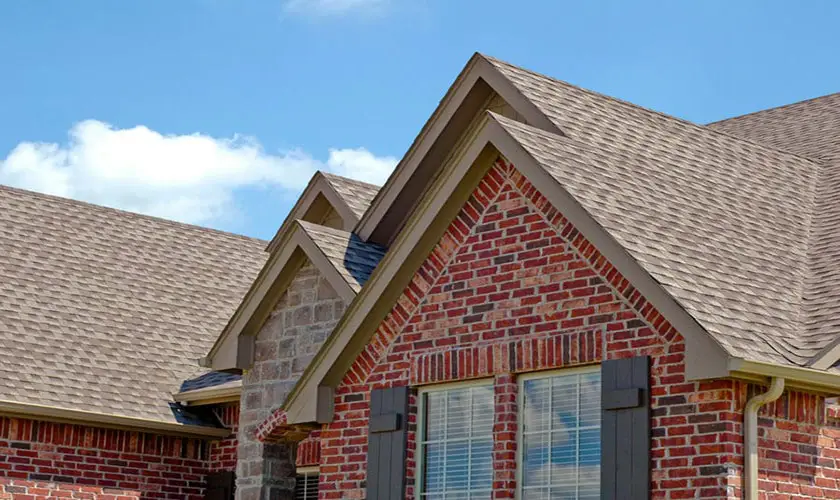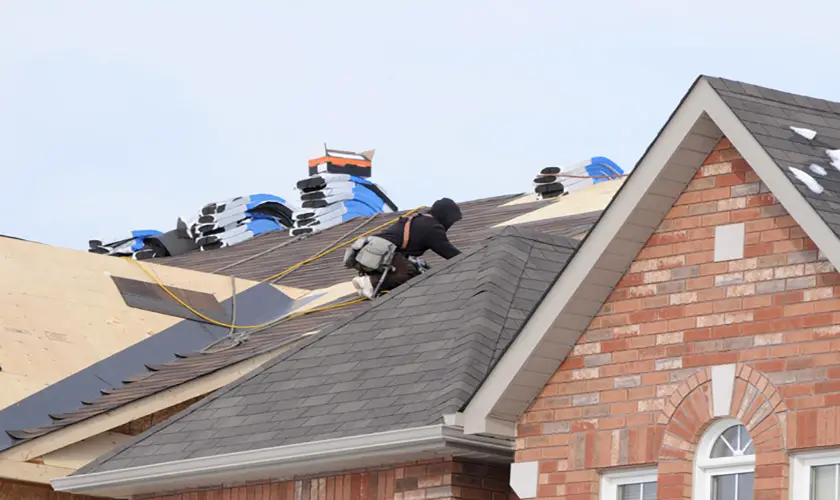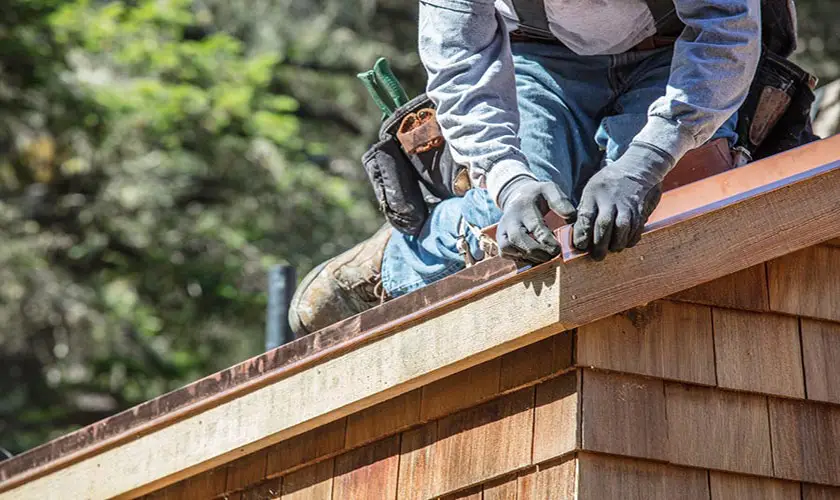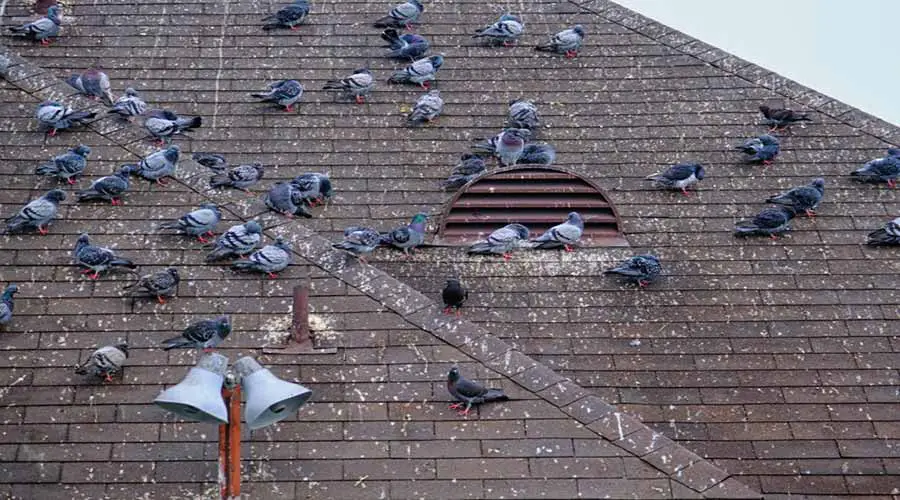Metal roofs are popular because they save energy and last long, but they can still leak and get damaged. Knowing how to find and fix a leak in metal roofs is important because it lets water through. If they don’t do this, there’s a much higher chance of a leak.
Leaks in metal roofing can be hard to trace. To find leaks in a metal roof, search the home for signs of water spots, mildew, water damage, or cracks around pipes. Most often, leaks in metal roofing will occur:
- around roof penetrations such as plumbing boots or roof vents
- along roof transitions, such as valleys or pitch changes
- along roof-to-wall intersections
- in the metal panels caused by rust, holes, or fastener failure
If you have attic access, you can follow the water stains to trace the leak. But it’s not. If you have attic access, you can follow the water stains to trace the leak. But it’s not always that simple to find and fix a leak in a metal roof.
This article is perfect for you if you want to find and fix leaks in your metal roof.
How Do You Find A Leak In Metal Roof?
Metal roofs often have specific areas where leaks occur. To find a leak in your metal roof, check these areas. Finding leaks in a metal roof will be more successful if you focus and know where to check. If your roof has different profiles, types, or metal systems, these guidelines can help you find and fix leaks.
You can now make a specific repair plan by finding areas of weakness and maintenance. It’s best to rule out the following leak-prone areas to locate a metal roof leak.
The Roof’s Body
If a metal roof leaks, it is usually in the body of the roof, not in the penetration, termination, or transition areas. The leak, thus, occurs in the metal roofing panel itself.
You can identify such leaks by inspecting your roofing material. Here, you should check for;
- Rust in the holes
- Any puncture holes from debris
- Loose, missing, overtightened, missed, or loose-aligned screws
- A standing seam metal roofing panel that slides down your roof from expansion-contraction
If your roof leaks or you want to prevent damage, inspect the entire roof visually. Always begin with leaks that you can find easily to save time. If you have a dangerous, steep roof to walk on, you can use binoculars for inspection.
Transitions
Roof transitions are areas where two metal roof slopes connect. Here, you should focus on the small details, especially in the valleys. The common transitions include:
- Valleys
- Pitch changes
- The transition from roof to roof of different material
- The transition from a roof plane to another of the same material
You should check for:
- Miss, loose. Missing aligned screws
- Missing or gaps in butyl tape or sealant
- Gaps or lost trims between pieces
- The integrity of seams where a roofing panel overlaps another
The metals usually overlap by 6″ and have a sealant or two continuous beads of caulking between them.
Termination Details
A termination involves any area where your metal roof ends or stops. The edges of the building and the flashing and trims cover the ends of the metal panels.
Common terminations include:
- Hip cap
- Ridge cap
- Coping cap over the wall
- Counter flashing on walls
Here you should check for:
- Missing or loose pieces of the hip cap, coping cap, and ridge cap
- Make sure that water isn’t blowing or running underneath caps.
- Check the counter flashing where the metal roof ends at a wall or parapet. Inspect the sealant behind the counter flashing. Apply sealant on the counter flashing.
It will help if you inspect the roof when there is no ice or snow on the roof and the panels are dry.
Roof Penetrations
Roof penetrations happen when vents, supports, and pipes go through the metal roof. These areas often get leaks because they use tape, caulk, and sealant to keep water out. You should flash the holes in your roof. You should examine the flashing as part of regular preventive maintenance.
Common Penetration
- HVAC curbs
- Skylights
- Plumbing vents
- Chimneys
Here you should check for:
- Gaps found in metal trims in corners of HVAC curbs
- Degraded sealant around flashing
- Cracked seals on flashings
The caulking, pitch pan filler, butyl tape, and sealant exposed to the elements won’t last as long as the roof. You should, therefore, check sealants and re-apply them.
I don’t often find metal roof leaks outside of these areas. If you can’t find the leak, ask a professional for help.
How Do You Fix A Leak In A Metal Roof?
Metal Roof Leak Repair
Metal roof leak repair is a common issue faced by homeowners. To fix it, first, identify the source of the leak. Look for damaged or missing shingles, loose seams, or damaged flashing. Fix small holes and replace damaged sections using roofing cement or sealant. Hiring a professional may be necessary for larger repairs.
There are at least six steps to fixing your roof. Let’s go through them below:
1. Prepare The Tools You’ll Need
Before you start the process, you’ll require the best tools to complete the task. Here is a list of the tools that you’ll need:
- Nail bar and hammer
- Extension ladder
- Wire brush
- Fabric shears
- Paintbrush
- Urethane roof cement
- Glass-membrane fabric roof patch
- Plastic putty knife
- Metal-roofing base coat
- 1-inch galvanized-steel screws
- One 1/2-inch aluminum screw nails
- A cordless drill
You should have all your tools in a single area to save time. To fix your roof effectively, you should cover the steps below carefully to find and fix a leak in a metal roof.
2. Get To The Metal Roof
Here, you should use a ladder to get to your metal roof. You should ensure that you step lightly to prevent injuries. Avoid stepping on between the rows of the nails.
Before you climb the ladder, ensure your boot soles are dry. It’s best to wear a boot made for metal roofs. Your safety comes before anything else, especially when you need to find and fix a leak in a metal roof.
3. Identify The Source Of The Leaks
If a roof is punctured, the first thing that you’ll see are holes. If there is rusting and debris, your roof will contract or weaken. Identify rust holes and panels affected by wind or movement.
It will also be best if you inspect seam transition points. These points allow roofs to link with each other. Here, check whether there are any loose or missing screws. You can also inspect the periphery to identify any missing materials.
4. Remove And Replace The Screws.
After removing the roofing material, make sure to replace the screws that were removed. Ensure a secure fit and help prevent further damage. Use screws that resist corrosion and are the right size and length for your roof.
For loose screws, use a sealer to fill the gaps. This will help keep moisture from getting in and causing further damage. Tighten the screws.
Be mindful not to over-tighten any screws, which could damage the roofing materials.
5. Deal With The Gaps
If there are any gaps in the roofing material, use a sealant to fill them. This will help keep moisture from getting into the area and causing damage. Ensure that the sealant is appropriate for your type of roofing material.
6. Re-Apply Roof Cement And Do Away With Loose Caulking
Remove any existing caulking. It’s recommended to use roof cement to secure pieces of metal. Apply it liberally, making sure it covers the entire area. Allow time to dry before adding weight to the repaired area to prevent further damage and leaks.
You should apply the best urethane cement that suits your metal roof. It would be best if you employed urethane cement on the whole area. A 6-inch extension is enough to seal the gaps and holes effectively to find and fix a leak in a metal roof.

What Is The Best Sealant For Metal Roofs?
The best roof repair isn’t a product but the skills and knowledge to find the leaks correctly.
Use the right sealant on the market after finding the roof leak to stop more leaks. Using the incorrect sealant on your roof can cause flexibility and adhesion issues.
Look at the best sealants you can count on to find and fix a leak in a metal roof.
Titebond sealant is a reliable choice for finding and fixing leaks in metal roofs. It maintains a weather-tight bond during contraction and expansion cycles. It’s consistent even in cold weather and sticks well to dirty, damp surfaces.
Titebond sealant keeps a weather-tight bond to the roof through contraction and expansion cycles, making it a reliable choice for finding and fixing a leak in a metal roof. It’s consistent even in cold weather and sticks well to dirty, damp surfaces.
NovaFlex is also among the best metal roof sealants that you can use to repair leaks. The product is comparable to Titebond and has similar qualities and attributes. I think NovaFlex is the better option for sealing gutters.
You can use NovaFlex for both commercial and residential guttering jobs. The sealant isn’t as thick as regular roof sealant; thus, it moves and spreads in joints between metal pieces. In the process, it creates a consistent, watertight gasket.
NovaFlex is also the best solution to top caulk joints in metal guttering pieces. You can use it successfully on copper, aluminum, and Kynar-painted metal.
Butyl tape is a tried and tested metal roof sealant. It is mainly employed in creating a gasket between metal trim pieces. You can use it on Z, closure, and offset cleat. It is the best option in such applications because of its sticky nature. It also holds metal trims in place while screwing them.
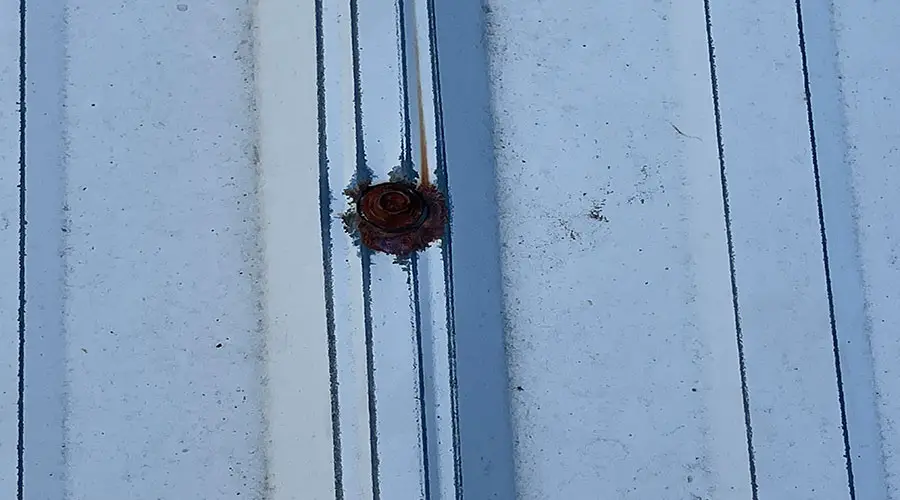
Metal Roof Leaks
Metal roofs can develop leaks for different reasons, like bad installation, age, or severe weather damage. Regular inspections and maintenance can find and fix small issues before they become big problems. Timely repairs can prevent further damage and ensure the longevity of the metal roof.
What Would Cause A Metal Roof To Leak?
Surface rust: Rust is known to peel the roof’s coating, thus leading to scaling and holes. It causes significant structural damage. A rusty roof doesn’t mean it’s leaking. There are several causes of metal roof leaks, as we have highlighted below:
- Deflection: It is the crimping/creasing or holes of metal panels. The leading cause of deflection is foot traffic. It can cause ponding water and, in the end, lead to roof leaks and rust.
- Movement: A good metal roof allows water to flow from the roof. A stiff repair product will prevent the patch from moving, leading to a roof leak.
- Incompatible materials: There are specific materials that don’t lead to rust or corrosion. If you use incompatible materials, you’ll get the opposite results.
- Punctures: Creases, crimping, and holes often happen due to HVAC installation and foot traffic. When someone drags an HVAC and it hits the roof, it will cause punctures and tears.
- Fasteners: Metal panels have two types of attachments: fasteners with rubber washers and clips. Sometimes, the fasteners can come loose, which makes gaps and holes in the rubber washer and metal. This will open the roof to water intrusion.
- Open laps: If you don’t install the seams and metal panels, they can lift and open the section for water. The result is structural damage.
- Missing parts: Over time, debris, deterioration, and wind can cause some parts of the metal roof to fall off. Vent flashings, boots, gutters, downspouts, foam closures, and edge metal can also cause water leaks and intrusion.
What Is The Life Expectancy Of A Metal Roof?
Most metal roofs have a lifespan of between 40 years to 70 years. But, maintaining it can either increase or decrease its longevity.
Metal roofs last longer than materials like asphalt, with a 12-20-year lifespan. To ensure a metal roof lasts a long time, it’s crucial to maintain and repair it. It’s essential to find and fix any leaks.
Ensure proper installation and handling with care to make your metal roof last longer. It will also help if you manage repairs and find and fix a leak in a metal roof on time.
Find and Fix A Leak In A Metal Roof FAQs
How do you find the source of a leak in a metal roof?
Finding metal roof leaks is tricky, but check for rust, holes, and damaged sealant. Inspect roof features, seams, and fasteners. Conduct a water test if needed. Ensure proper ventilation and check the underlayment. Address leaks by tightening fasteners, applying sealant, or seeking professional help.
What is the best coating for a metal roof to stop leaks?
Choosing the best metal roof coating depends on needs and climate. Options like Elastomeric (flexible, energy-efficient), Silicone (UV-resistant, ponding water durability), Acrylic (affordable, UV protection), and Polyurethane (impact-resistant, UV options) offer choices.
What can I use to seal a hole in my metal roof?
Sealing a hole in a metal roof is vital to prevent leaks and damage. Clean the area, use roofing cement or sealant for small holes, and apply a metal patch secured with screws for larger ones. Consider reinforcing with roofing tape or mesh and applying a protective coating.
Why does my metal roof leak in heavy rain?
Metal roofs can leak in heavy rain for several reasons, such as poor installation or damaged sealant. Other factors include loose fasteners, flashing issues, and physical damage.
Conclusion
Problems such as screws coming loose or trim that is not installed can weaken metal roof panels. Water can get into the roof if you have stack and curb flashings. To prevent leaks in your roof, pay attention to metal roofing screws and install them.
Address leaks, especially if caused by poor installation or rusty roof fasteners. Sealing roof curbs and metal roofing stops is essential. When dealing with leaks in metal roofs, consult roofing contractors for expert solutions. To protect your roof, use a good sealant and rust inhibitors to prevent rust damage.
If you don’t have the skills and knowledge to fix a metal roof, don’t hesitate to contact a professional.



